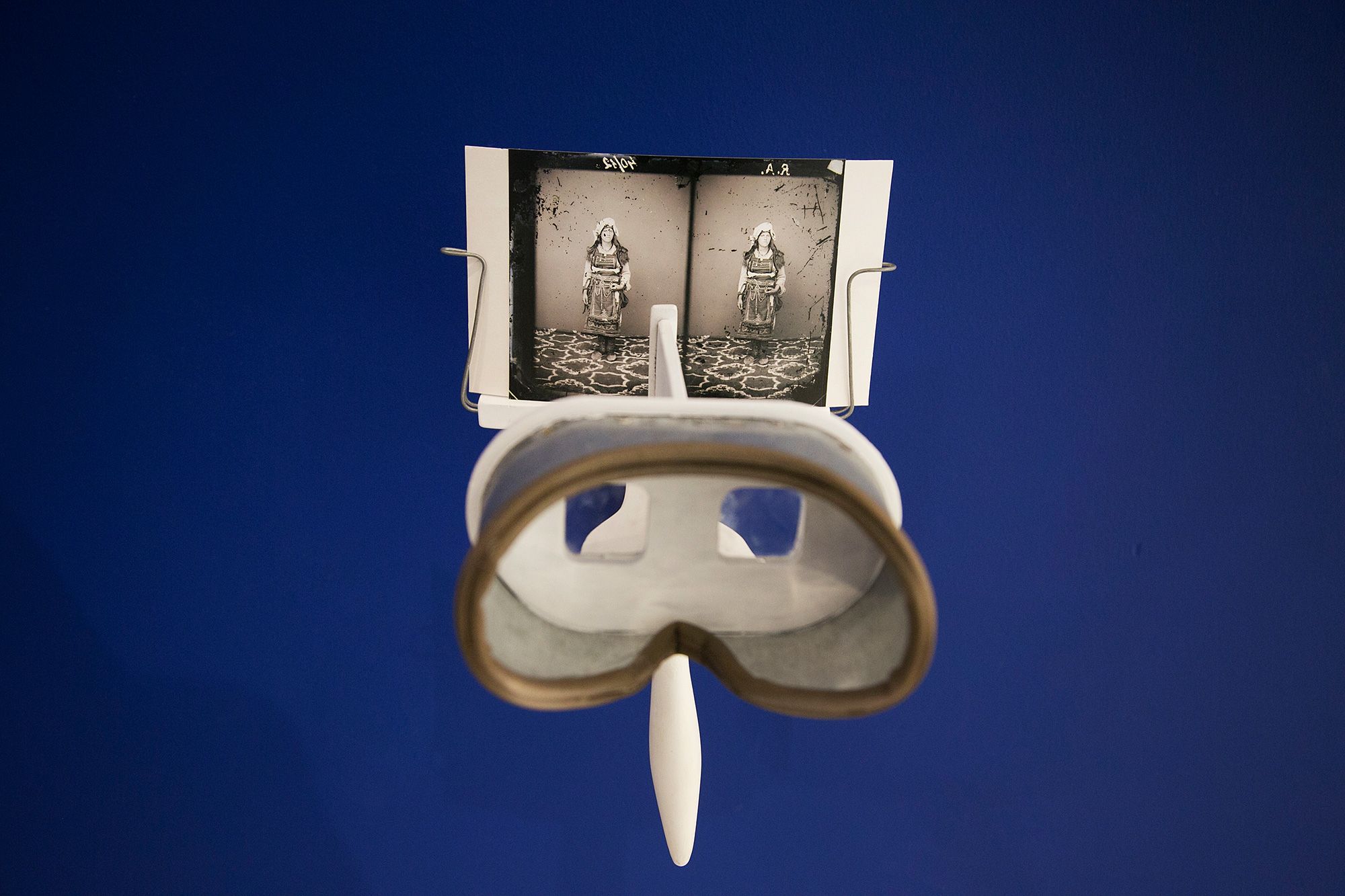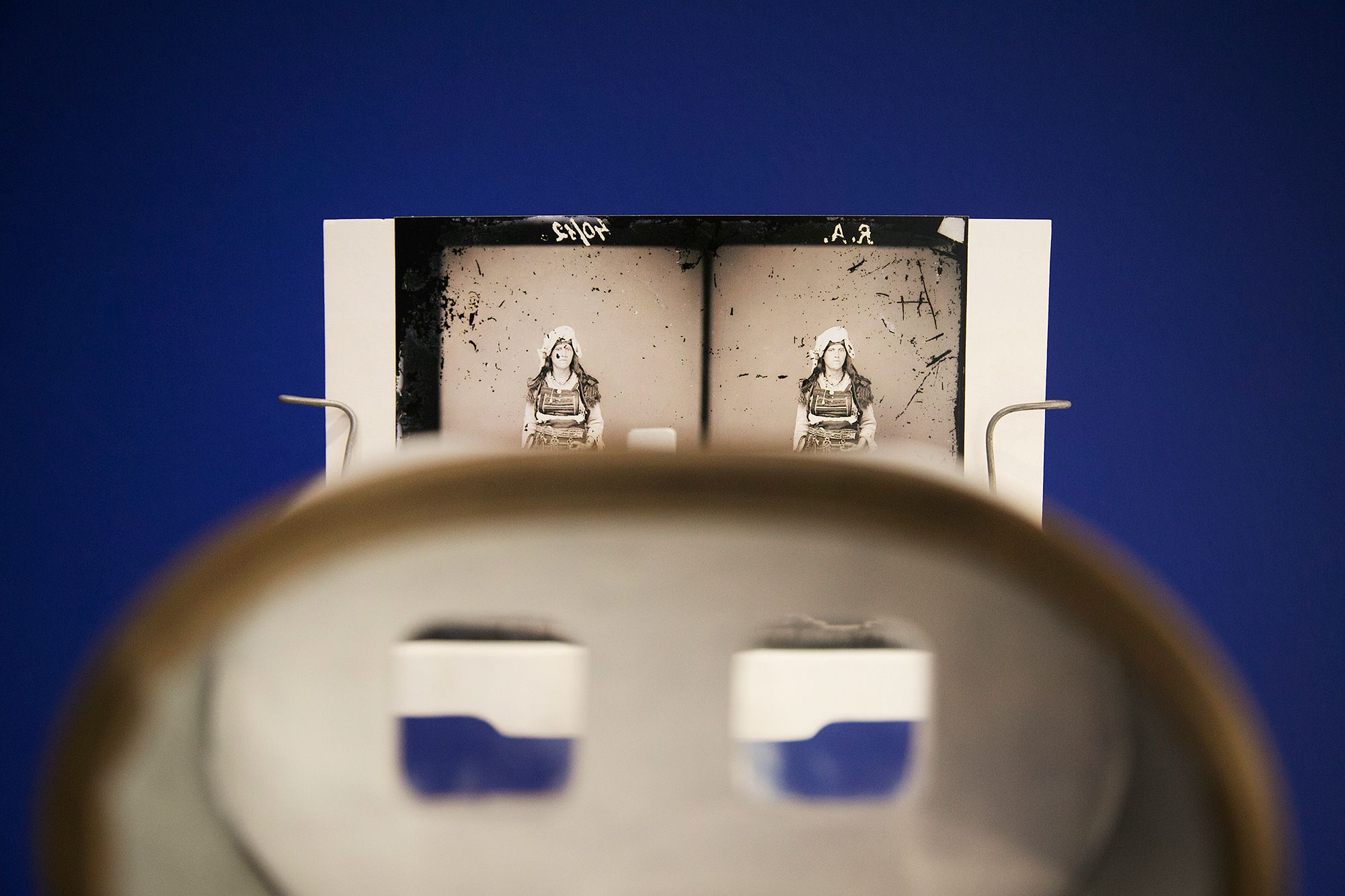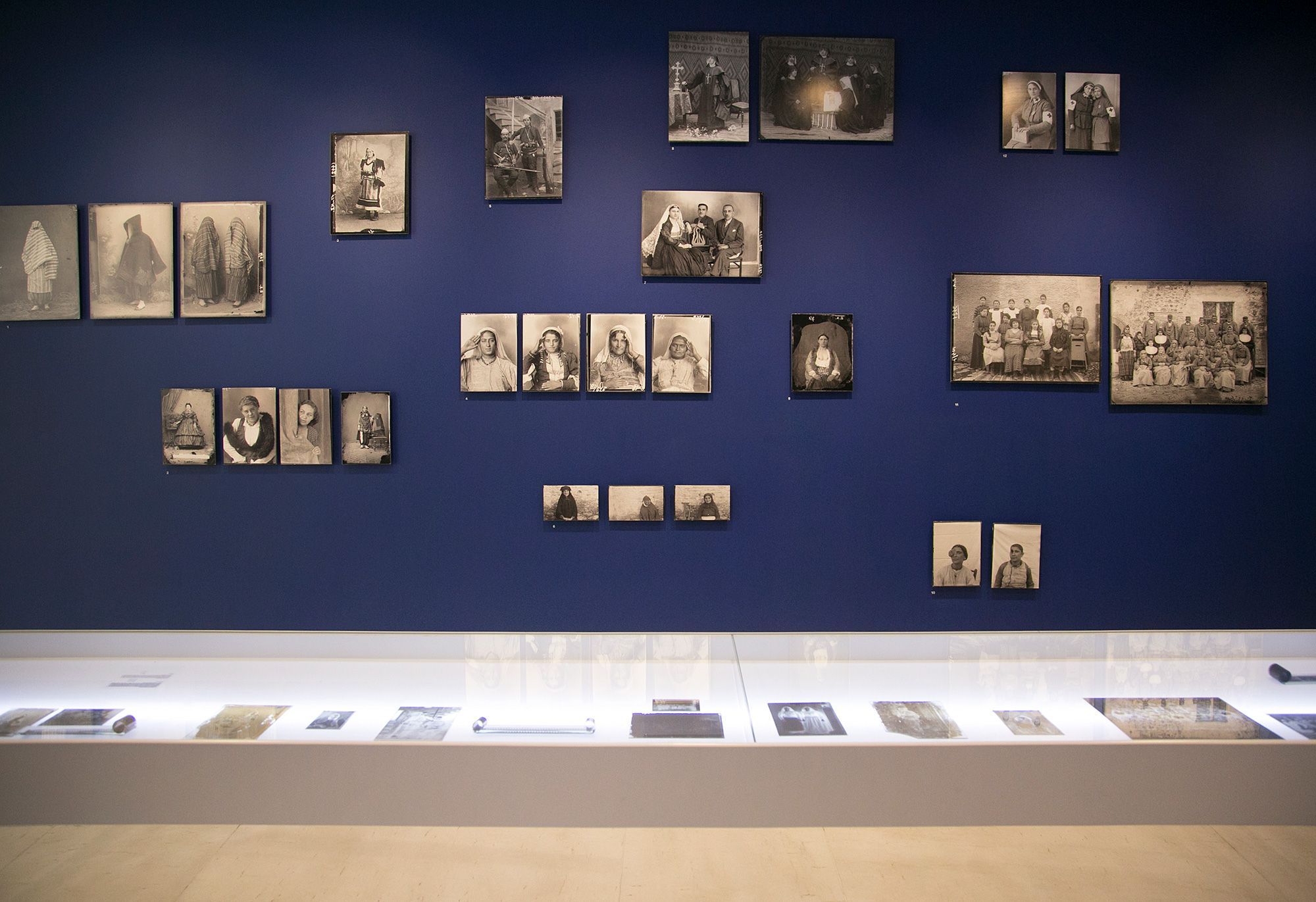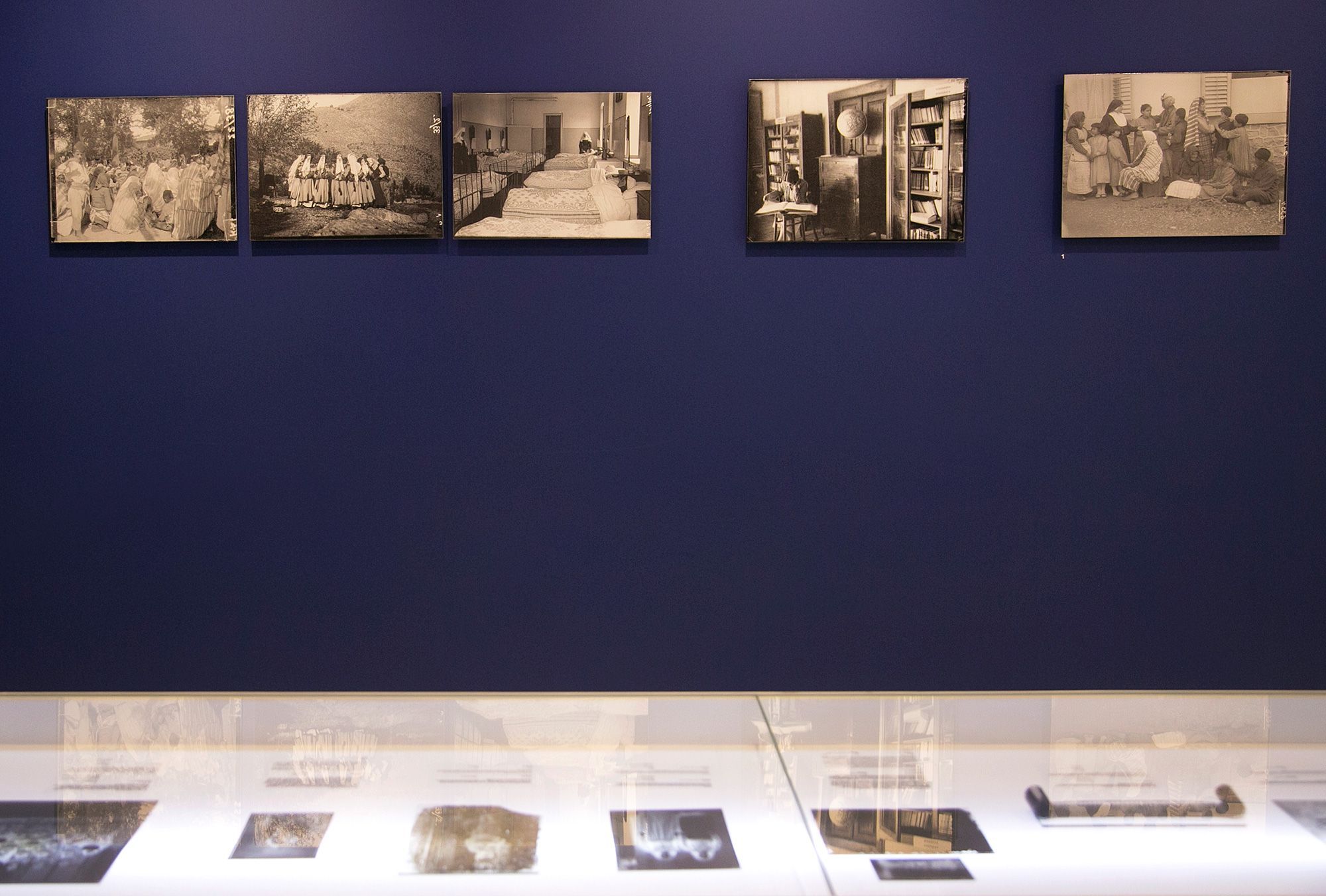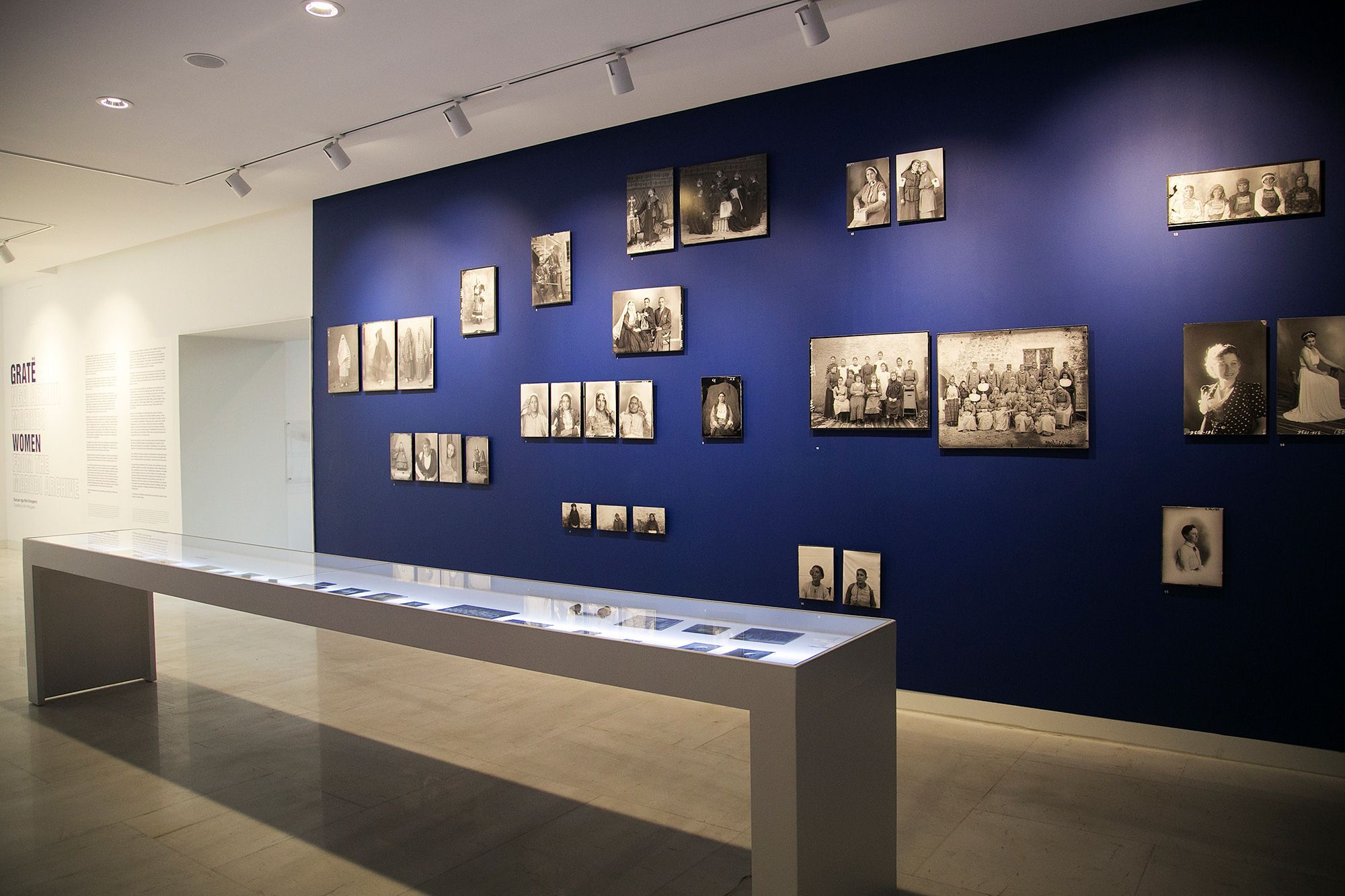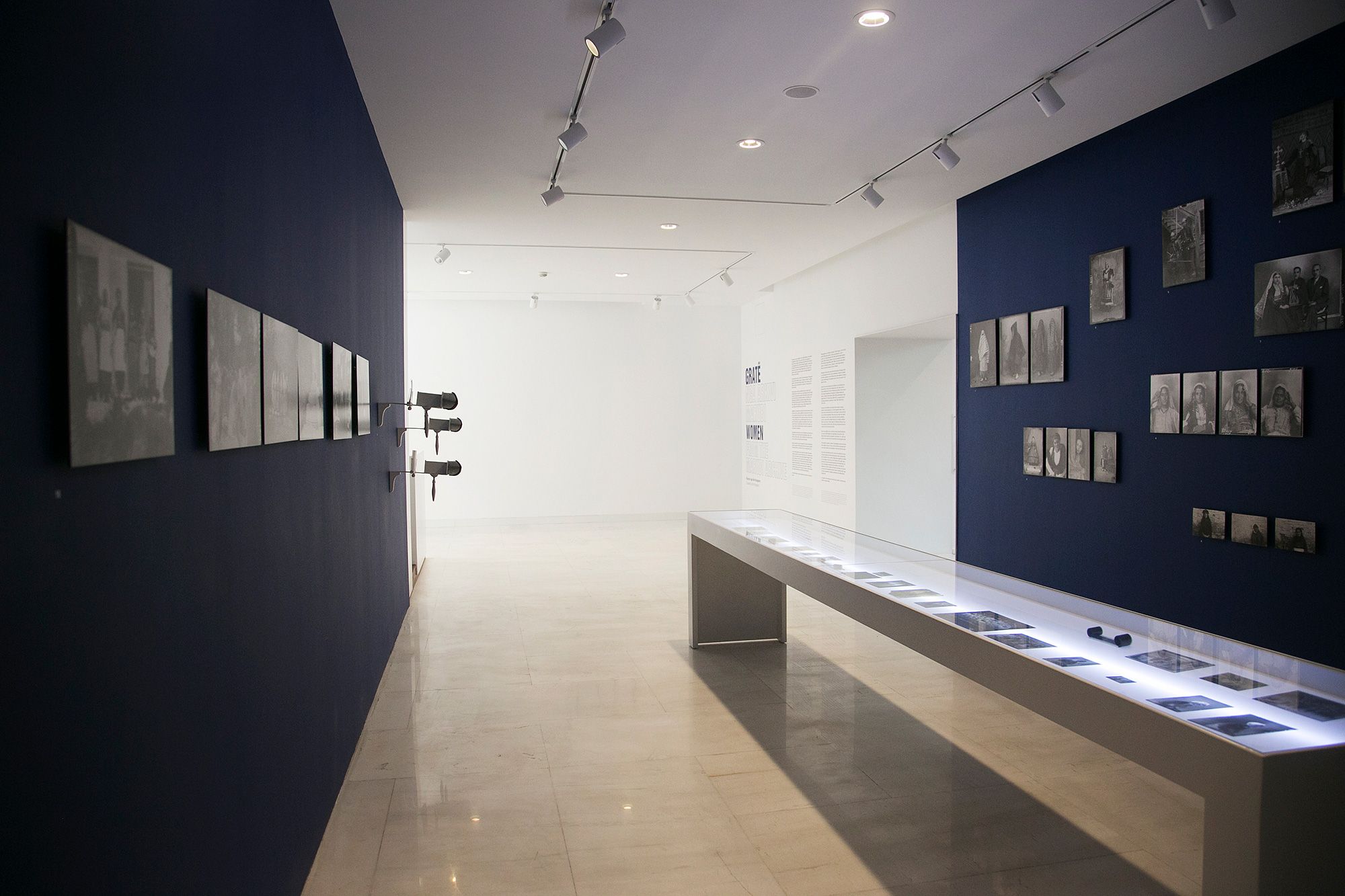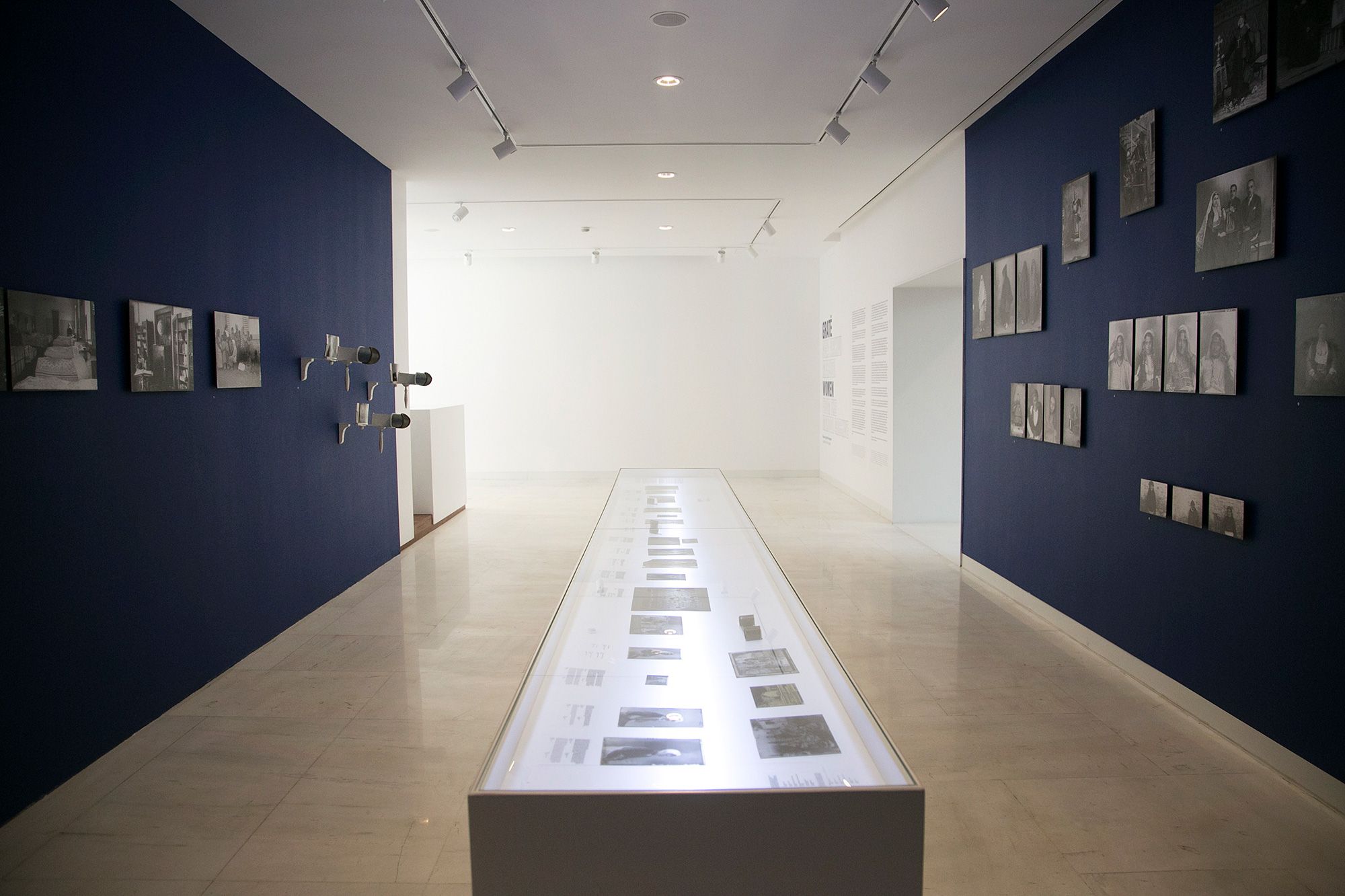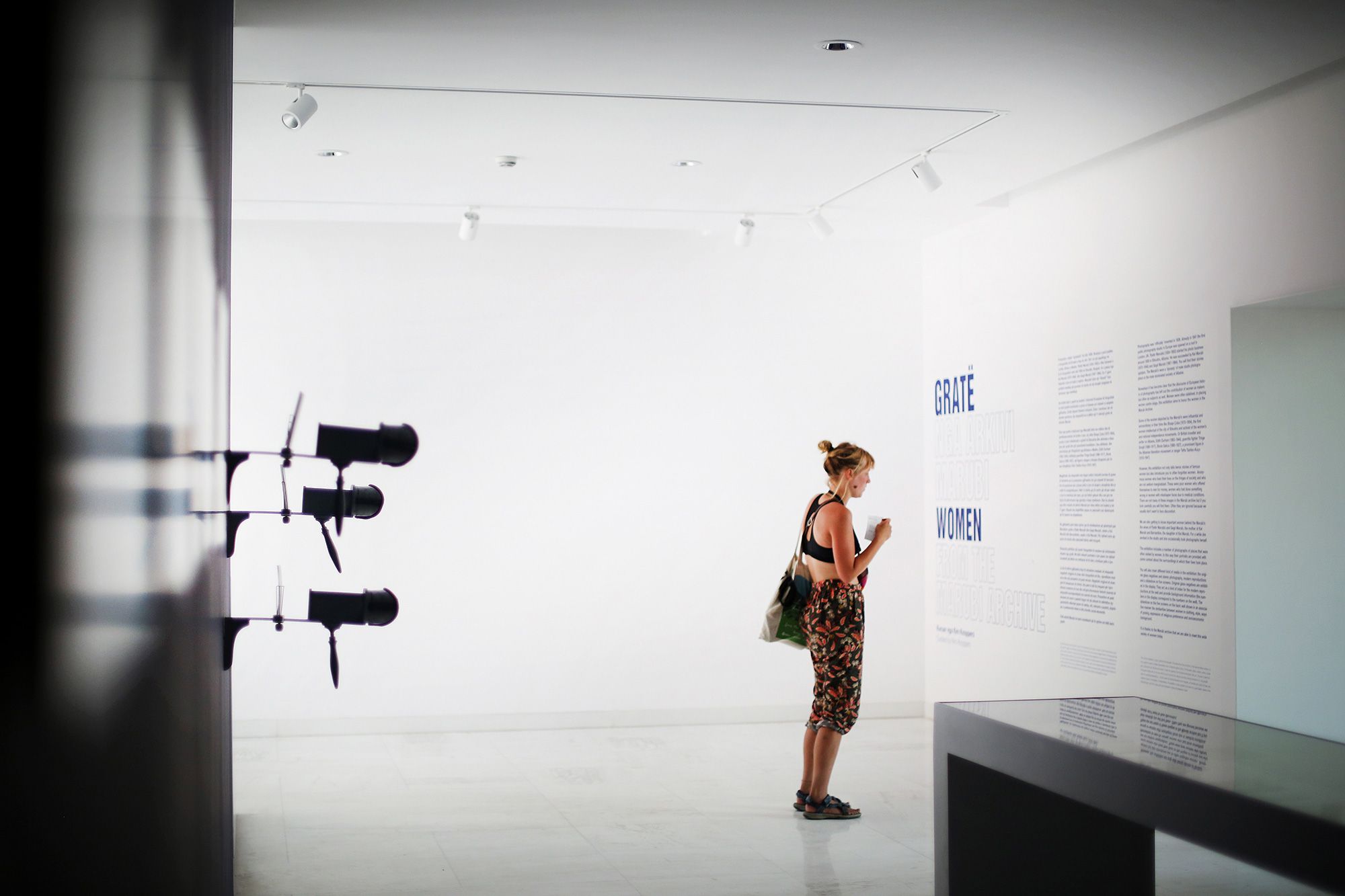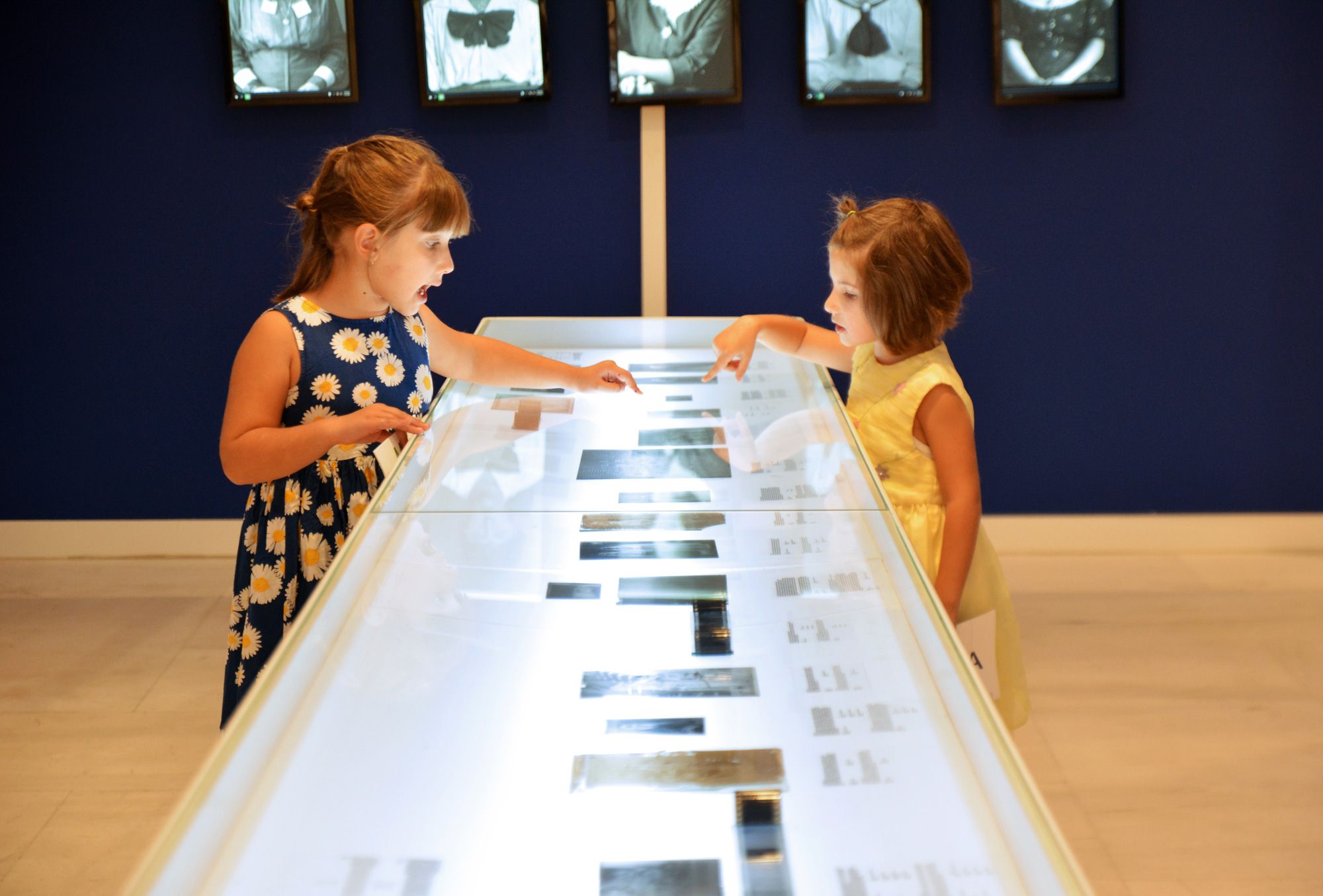Women from the Marubi Archive
–
Photography was ‘officially’ invented in 1839. Already in 1841 the first public photography studio in Europe was opened on a roof in London, UK. Pietro Marubbi (1834-1903) started his photo business around 1859 in Shkodra, Albania. He was succeeded by Kel Marubi (1870-1940) and Gegë Marubi (1907-1984). You will find their stories upstairs. The Marubi’s were a ‘dynasty’ of male studio photographers in the male dominated society of Albania.
Nowadays it has become clear that the discourse of European history of photography has left out the contribution of women as makers but often as subjects as well. Women were often sidelined. In placing women centre stage, this exhibition aims to honor the women in the Marubi Archive.
Some of the women depicted by the Marubi’s were influential and extraordinary in their time like Shaqe Çoba (1875-1954), the first woman intellectual of the city of Shkodra and activist of the women’s and national independence movements. Or British traveller and writer on Albania, Edith Durham (1863-1944), guerrilla fighter Tringe Smajli (1880-1917), Shote Galica (1895-1927), a prominent figure in the Albanian liberation movement or singer Tefta Tashko-Koço (1910-1947).
However, this exhibition not only tells heroic stories of famous women but also introduce you to often forgotten women. Anonymous women who lived their lives on the fringes of society and who are not seldom marginalized. These were poor women who offered themselves to men for money, women who had done something wrong or women with misshapen faces due to medical conditions. There are not many of these images in the Marubi archive but if you look carefully you will find them. Often they are ignored because we usually don’t want to face discomfort.
We are also getting to know important women behind the Marubi’s: the wifes of Pjetër Marubi and Gegë Marubi, the mother of Kel Marubi and Bernadine, the daughter of Kel Marubi. For a while she worked in the studio and she occasionaly took photographs herself.
The exhibition includes a number of photographs of places that were often visited by women. In this way their portraits are provided with some context about the surroundings in which their lives took place.
You will also meet different kind of media in the exhibition: the original glass negatives and stereo photography, modern reproductions and a slideshow on five screens. Original glass negatives are exhibited in the display. They act as a kind of index for the modern reproductions at the wall and provide background information.The slideshow on the five screens shows in an associative manner similarities between women in clothing, style, ways of posing, expression of religious preference and socioeconomic background.
It is thanks to the Marubi archive that we are able to meet these wide variety of women today.
Exhibition Credits
- Curated by
Kim Knoppers
- Acknowledgements
Albanian Development Fund

